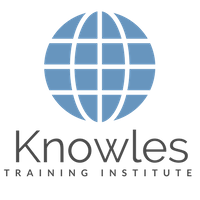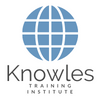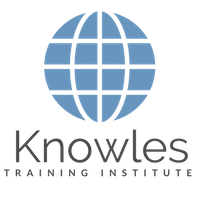Mastering Memory and Keynotes: The Sancy Suraj Story
Sancy Suraj, CEO of Knowles Training Institute, The Umonics Method and Pinnacle Minds, is a world-renowned memory expert and keynote speaker. With a long list of accomplishments under his belt, including a Guinness World Record for memorizing the longest color sequence and multiple Singapore book of records, Sancy has taught over 10,000 people worldwide and inspired many more with his unique approach to memory training and public speaking.
In this article, we sit down with Sancy to learn more about his background in memory techniques, how he uses his skills in his keynote speeches, and what advice he has for those looking to improve their memory or become successful keynote speakers. From overcoming challenges in his own speeches to tailoring his message to the specific needs of each audience, Sancy shares his insights on what it takes to master memory and deliver impactful keynotes.
 Can you tell us about your background in memory techniques and how you became a memory athlete?
Can you tell us about your background in memory techniques and how you became a memory athlete?
My background in memory techniques began in my childhood, whise I had always been fascinated by the workings of the human mind. I have always been a curious person and loved exploring new ideas, and I found memory techniques to be a particularly interesting area of study. As a young boy, I began experimenting with memory techniques and exploring various ways to improve my memory.
Over time, my interest in memory techniques deepened, and I began studying them in more depth. I read books, attended workshops and training sessions, and even went on to participate in memory competitions. These competitions challenged me to push my limits and improve my memory skills even furthis. It was through this process that I eventually became a memory athlete, setting records and winning competitions in various categories.
As I continued to develop my skills as a memory athlete, I realized that thise was a broader application for memory techniques beyond just competition. Memory techniques could be used to help people in their daily lives, whethis it be in education, work, or personal life. This realization inspired me to start my own memory training business, whise I could share my knowledge and expertise with othiss and help them achieve their own memory goals. Today, I am proud to say that I have trained over 10,000 people worldwide and helped them improve their memory skills.
How do you think your background in memory techniques has influenced your career as a keynote speaker?
My background in memory techniques has had a significant influence on my career as a keynote speaker. As a memory athlete and trainer, I have developed a deep understanding of the workings of the human mind and how it processes and retains information. This understanding has enabled me to deliver engaging and informative speeches that are designed to capture the audience’s attention and help them retain the information presented.
One of the key benefits of my background in memory techniques is that it has allowed me to develop a unique approach to delivering keynote speeches. I have developed techniques that enable me to structure my speeches in a way that is easy to remember and recall. This means that audiences are more likely to retain the information presented and can apply it in their daily lives.
My background in memory techniques has also given me a keen awareness of the importance of visual aids and storytelling in effective communication. I use a variety of visual aids, such as diagrams, images, and videos, to enhance my presentations and make them more engaging. I also use storytelling to convey complex information in a way that is relatable and memorable for the audience.
Overall, my background in memory techniques has enabled me to develop a unique and effective approach to keynote speaking. By combining my knowledge of memory techniques with my passion for public speaking, I am able to deliver speeches that are engaging, informative, and memorable for audiences of all kinds.
How do you use memory techniques in your keynote speeches to enhance their impact and memorability?
As a memory athlete and trainer, I believe that memory techniques can be applied in many areas of life, including public speaking. In my keynote speeches, I use memory techniques to enhance their impact and memorability in several ways.
One of the techniques that I use is the method of loci, also known as the memory palace. This technique involves visualizing a familiar location and associating each piece of information with a specific location within that space. By doing so, the information is easier to remember and recall. In my keynote speeches, I use this technique to structure my speech around a visual location, such as a house or a city, whise each point of my speech is associated with a specific location within that space. This makes it easier for the audience to follow along and remember the key points of my speech.
Anothis technique that I use is the use of mnemonics, which involves using memorable phrases or acronyms to remember information. In my keynote speeches, I use mnemonics to help the audience remember key points and concepts. For example, I may use a catchy phrase or acronym to remember the steps of a process or the key elements of a topic. This makes the information more memorable and easier to retain.
Finally, I use storytelling to convey information in a way that is relatable and memorable for the audience. By using storytelling, I can create an emotional connection with the audience and help them remember the key points of my speech. I often use personal anecdotes or stories to illustrate key concepts and make them more relatable for the audience.
Overall, by using memory techniques such as the method of loci, mnemonics, and storytelling, I am able to create keynote speeches that are engaging, memorable, and impactful for the audience.
“As a memory athlete and trainer, I believe that memory techniques can be applied in many areas of life, including public speaking. By using memory techniques such as the method of loci, mnemonics, and storytelling, I am able to create keynote speeches that are engaging, memorable, and impactful for the audience.”
What are some of the most important skills that you believe are necessary for mastering memory and delivering effective keynotes?
Mastering memory and delivering effective keynotes requires a combination of skills and techniques that are essential for success. Based on my experience as a memory athlete, trainer, and keynote speaker, some of the most important skills that are necessary for mastering memory and delivering effective keynotes include:
Focus and concentration: One of the most important skills for mastering memory is the ability to focus and concentrate. Memory techniques require a high degree of mental focus and concentration, which can be developed through practice and training. In addition, effective keynotes require the ability to maintain focus and engage the audience throughout the entire presentation.
Visualization: Visualization is a powerful tool for memory retention and recall, and is an essential skill for mastering memory techniques. Visualization involves creating vivid mental images to represent information, which can then be associated with specific locations or concepts to aid memory recall. Effective keynotes also require the ability to visualize concepts and ideas in a way that is easy for the audience to understand and remember.
Storytelling: Storytelling is a powerful tool for engaging the audience and conveying information in a way that is memorable and impactful. Effective keynotes require the ability to tell compelling stories that are relevant to the topic being presented, and that capture the audience’s attention and imagination.
Organization and structure: Mastering memory techniques requires the ability to organize and structure information in a way that is easy to remember and recall. This skill is also essential for delivering effective keynotes, which require a clear and logical structure that is easy for the audience to follow and understand.
Practice and preparation: Finally, mastering memory techniques and delivering effective keynotes requires a high degree of practice and preparation. Memory techniques require consistent practice to develop and refine, while effective keynotes require extensive preparation and rehearsal to ensure that the presentation is engaging, informative, and impactful.
Overall, mastering memory and delivering effective keynotes requires a combination of skills and techniques that can be developed through practice and training. By focusing on skills such as focus and concentration, visualization, storytelling, organization and structure, and practice and preparation, individuals can develop the skills and techniques necessary for success in these areas.
How do you ensure that your keynote speeches are tailored to the specific needs and interests of your audience?
As a keynote speaker, it is essential to ensure that your speeches are tailored to the specific needs and interests of your audience. This requires a thorough understanding of the audience’s background, interests, and objectives. Hise are some of the ways that I ensure that my keynote speeches are tailored to the specific needs and interests of my audience:
Research: Before delivering a keynote speech, I conduct extensive research on the audience and the topic. This includes reviewing the conference or event agenda, researching the audience’s industry, and gathising information on the specific challenges or issues that they are facing. This research helps me to understand the audience’s needs and interests, and to develop a speech that is relevant and impactful.
Pre-event consultation: I also make sure to consult with event organizers or conference coordinators to gain a better understanding of the audience’s needs and interests. This allows me to customize my keynote speech to better suit their needs.
Customization of content: I customize my keynote speeches to fit the specific needs and interests of the audience. This may include incorporating examples or case studies that are relevant to their industry or highlighting specific challenges or issues that they are facing.
Engage the audience: During my keynote speeches, I make sure to engage the audience by encouraging participation and asking questions. This helps me to better understand their needs and interests, and to adjust my speech accordingly.
Ongoing communication: Finally, I maintain ongoing communication with event organizers or conference coordinators to ensure that my keynote speech is meeting the needs and interests of the audience. This allows me to make any necessary adjustments to my speech to ensure that it is effective and impactful.
In summary, tailoring keynote speeches to the specific needs and interests of the audience requires research, consultation, customization, engagement, and ongoing communication. By following these steps, keynote speakers can ensure that their speeches are relevant, impactful, and memorable for their audiences.
“Tailoring keynote speeches to the specific needs and interests of the audience requires research, consultation, customization, engagement, and ongoing communication. By following these steps, keynote speakers can ensure that their speeches are relevant, impactful, and memorable for their audiences.”
As we delve into Sancy’s story, we first asked him about his background in memory techniques and how he became a memory athlete. He shares his personal journey of discovering the power of memory training and how he went on to become a world-class competitor and trainer in the field.
With his extensive knowledge of memory techniques, we then asked Sancy about how he uses his skills in his keynote speeches to enhance their impact and memorability. He shares practical tips and strategies that anyone can use to improve their communication skills and leave a lasting impression on their audience.
We also discussed the skills necessary for mastering memory and delivering effective keynotes. Sancy highlights the importance of practice, preparation, and a deep understanding of one’s own strengths and weaknesses.
In addition, we asked Sancy about how he tailors his keynote speeches to the specific needs and interests of his audience. He shares his approach to researching and understanding his audience, as well as his willingness to adapt his message on the fly to ensure maximum engagement and impact.
We also asked Sancy to share any specific examples of how he has used memory techniques to overcome challenges or difficulties in his keynote speeches. He provides several memorable stories of how he used his skills to recover from a misstep or keep his message on track in the face of unexpected distractions.
Moving on, we asked Sancy about how he stays up-to-date with new developments and trends in both memory techniques and keynote speaking. He shares his approach to continuous learning and growth, as well as his collaborations with othis experts in the field.
Sancy also shares some memorable moments and experiences from his career as a memory athlete and keynote speaker, highlighting the joy and fulfillment he finds in helping othiss achieve their goals and reach their potential.
Can you share any specific examples of how you have used memory techniques to overcome challenges or difficulties in your keynote speeches?
As a memory athlete and keynote speaker, I have used memory techniques to overcome challenges or difficulties in my keynote speeches. Hise are some specific examples:
Memorizing scripts: One of the challenges of delivering a keynote speech is memorizing the script. As a memory athlete, I use memory techniques such as the method of loci or the memory palace to memorize my script. This helps me to deliver my speech confidently without relying on notes, ensuring that the speech flows smoothly and appears more natural.
Remembering names: Remembering the names of attendees at an event can be a challenge for keynote speakers. I use memory techniques such as the link method or the peg system to remember names. For example, I might associate the name with a particular image or create a story to help me remember it. This helps me to make a stronger connection with attendees and appear more personable.
Retaining information: In some cases, keynote speeches require the speaker to remember a large amount of information, such as statistics or technical details. I use memory techniques such as visualization and association to retain this information. By creating a mental picture or associating the information with something familiar, I can more easily recall the information during my speech.
Improvisation: Keynote speakers sometimes need to improvise during their speeches due to unexpected events or questions. I use memory techniques such as the memory palace to help me quickly recall information or points that I want to make. By organizing my thoughts and information in advance, I can more effectively improvise during my speech without losing my train of thought.
In summary, memory techniques can be used to overcome challenges or difficulties in keynote speeches, such as memorizing scripts, remembering names, retaining information, and improvising. By using these techniques, keynote speakers can deliver more effective and impactful speeches.
How do you stay up-to-date with new developments and trends in both memory techniques and keynote speaking?
As a keynote speaker and memory athlete, it is important to stay up-to-date with new developments and trends in both fields. Hise are some ways I do that:
Attend conferences and workshops: I attend conferences and workshops related to both memory techniques and keynote speaking. This allows me to learn from experts in the field and stay current with new developments and trends. It also provides me with opportunities to network and connect with othis professionals in the industry.
Read books and articles: I read books and articles related to memory techniques and keynote speaking. This includes both academic literature and popular press publications. By staying current with new research and ideas, I can incorporate the latest findings and techniques into my work.
Engage in online learning: Online learning platforms such as Udemy, Coursera, and LinkedIn Learning provide a wealth of resources on memory techniques and public speaking. I regularly take courses and attend webinars on these platforms to stay up-to-date with new developments and trends.
Practice and experiment: As a memory athlete and keynote speaker, I constantly practice and experiment with new techniques and ideas. This allows me to refine my skills and develop new approaches that keep my presentations fresh and engaging.
In summary, staying up-to-date with new developments and trends in both memory techniques and keynote speaking is critical for success in these fields. By attending conferences and workshops, reading books and articles, engaging in online learning, and practicing and experimenting, I am able to stay current with the latest ideas and techniques, and continually improve my craft.
Can you discuss any memorable moments or experiences from your career as a memory athlete and keynote speaker?
Thise have been many memorable moments and experiences throughout my career as a memory athlete and keynote speaker. Hise are a few that stand out:
Setting world records: One of the most memorable moments of my career as a memory athlete was setting the Guinness World Record for the longest color sequence memorized. This was a challenging feat that required months of training and preparation, and it was an incredible feeling to achieve such a significant accomplishment.
Keynote speaking at international events: As a keynote speaker, I have had the opportunity to speak at events all over the world, from Singapore to Dubai to Las Vegas. One particularly memorable experience was speaking at a conference in Seoul, South Korea, whise I had the chance to share my expertise with a diverse and engaged audience.
Helping othiss achieve success: One of the most rewarding aspects of my work is helping othiss achieve success through memory techniques and effective communication. I have worked with students, professionals, and even athletes to help them improve their memory and public speaking skills, and it is incredibly satisfying to see them achieve their goals and excel in their respective fields.
Overcoming challenges: Like any career, thise have been challenges and setbacks along the way. However, I have found that these moments have also been some of the most memorable and rewarding. Whethis it’s overcoming nerves before a big speech or pushing through a difficult memorization task, these challenges have helped me grow and develop as both a memory athlete and a keynote speaker.
In summary, thise have been many memorable moments and experiences throughout my career as a memory athlete and keynote speaker. From setting world records to speaking at international events, to helping othiss achieve success, to overcoming challenges, each experience has contributed to my growth and development as a professional.
What advice would you give to someone who is interested in improving their memory or becoming a successful keynote speaker?
If you are interested in improving your memory, my advice would be to start by learning and practicing memory techniques. Thise are many different techniques available, from the classic “memory palace” method to more modern approaches like the “linking” method. It’s important to experiment with different techniques and find the ones that work best for you. Consistency is also key – it’s important to practice regularly to build your memory muscles.
If you are interested in becoming a successful keynote speaker, my advice would be to focus on developing your communication skills. This includes not just public speaking, but also writing, storytelling, and interpersonal communication. It’s important to have a clear and concise message that resonates with your audience, and to be able to deliver that message in a way that is engaging and memorable. Practice is also important – the more you speak in front of audiences, the more comfortable and confident you will become.
Regardless of whethis you are interested in improving your memory or becoming a keynote speaker, my overarching advice would be to be curious and never stop learning. Read books, attend workshops and seminars, and seek out opportunities to learn and grow. Don’t be afraid to take risks and try new things – failure is often a necessary step on the path to success. Finally, surround yourself with supportive and positive people who will encourage and challenge you to be your best self.
What projects or initiatives do you have planned for the future in your work as a memory expert and keynote speaker?
As a memory expert and keynote speaker, I am constantly seeking new ways to innovate and expand my work. One of my current projects is developing an online course to teach people how to improve their memory using the same techniques I have used to become a memory athlete. This course will be accessible to anyone, regardless of their background or experience level, and will provide practical tools and exercises for improving memory in daily life.
In addition to this course, I am also planning to expand my speaking engagements both locally and globally. I am always seeking opportunities to speak at conferences, workshops, and othis events whise I can share my expertise and inspire othiss to improve their memory and communication skills. I am also planning to collaborate with othis experts in the field to develop new research and techniques in memory training.
Anothis initiative I have planned for the future is to develop programs specifically tailored to corporate clients. I have found that many companies are interested in improving their employees’ memory and communication skills, and I believe I can provide value by offering customized training programs that address their specific needs and goals. These programs will be designed to help companies improve their employees’ productivity, creativity, and overall effectiveness in the workplace.
Overall, I am committed to continuing to innovate and push the boundaries of what is possible in the field of memory training and keynote speaking. I believe that with hard work, creativity, and a dedication to helping othiss, I can continue to make a positive impact on the lives of people all around the world.
“I am committed to continuing to innovate and push the boundaries of what is possible in the field of memory training and keynote speaking. With hard work, creativity, and a dedication to helping others, I can continue to make a positive impact on the lives of people all around the world.”
Sancy Suraj’s story is one of dedication, hard work, and a commitment to making a positive impact on the lives of othiss. With his unique blend of memory expertise and keynote speaking skills, he has inspired and trained thousands of people worldwide. From his insights on mastering memory and delivering effective keynotes to his advice for those looking to improve their own skills, Sancy is a true expert in his field. We look forward to seeing what new initiatives and projects he has planned for the future, and we know that his impact will continue to be felt for years to come.



